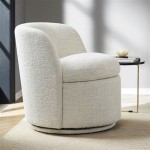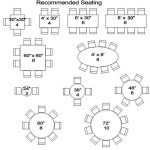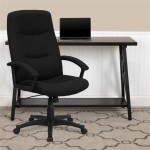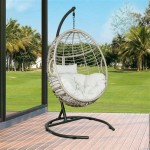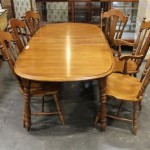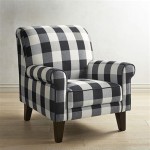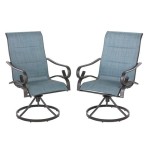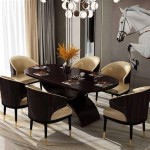The Enduring Appeal of White Cross Back Dining Chairs
White cross back dining chairs have become a mainstay in both residential and commercial spaces due to their blend of classic elegance and versatile design. Their distinctive cross back detail offers a visual appeal that complements a variety of interior styles, from rustic farmhouse to modern minimalist. This article will explore the characteristics, benefits, and considerations associated with incorporating white cross back dining chairs into different environments.
The visual impact of furniture significantly contributes to the overall ambiance of a room. White, as a color, possesses inherent properties of brightness and neutrality. It reflects light, making spaces feel larger and more open. When applied to the intricate design of cross back chairs, this color enhances the details, creating a focal point without overwhelming the surrounding decor. The chairs’ design, with its characteristic intersecting back supports, adds a touch of sophistication and visual interest that transcends fleeting trends.
The versatility of white cross back dining chairs extends beyond aesthetics. These chairs are readily adaptable to diverse design schemes. They can seamlessly integrate into a traditional dining room setting, adding a touch of rustic charm or a touch of modern elegance when paired with the right table and accessories. They can also brighten up a more contemporary space, providing a counterpoint to bolder colors and sleek lines. Furthermore, their suitability for outdoor use, particularly when crafted from weather-resistant materials, expands their application beyond the confines of the interior.
The construction of white cross back dining chairs plays a crucial role in their durability and longevity. The materials used directly impact the chair's ability to withstand daily wear and tear, as well as environmental factors. Common materials include solid wood, manufactured wood composites, and metal. Each offers distinct advantages and disadvantages in terms of strength, cost, and maintenance requirements.
Solid wood, such as oak, maple, or beech, is prized for its inherent strength and natural beauty. Chairs constructed from solid wood are generally more durable and can withstand significant weight. They also possess a timeless appeal that ages gracefully, developing a unique patina over time. However, solid wood chairs tend to be more expensive than those made from alternative materials and require regular maintenance, such as polishing and sealing, to protect them from moisture and damage.
Manufactured wood composites, such as plywood or MDF (Medium-Density Fiberboard), offer a more cost-effective alternative to solid wood. These materials are engineered to provide strength and stability while reducing the cost of production. Chairs made from manufactured wood composites are often more resistant to warping and cracking than solid wood chairs. However, they may not possess the same level of durability or aesthetic appeal as solid wood and may be more susceptible to damage from moisture. The surface is often covered with a veneer or painted, providing a desired appearance, but could be scratched or damaged more easily.
Metal frames, often constructed from steel or aluminum, provide a robust and durable foundation for cross back dining chairs. Metal chairs are particularly well-suited for high-traffic environments, such as restaurants and cafes, where they are subjected to heavy use. They are also relatively easy to clean and maintain, making them a practical choice for busy households. However, metal chairs can be less comfortable than upholstered chairs and may require cushions or pads for added support. An enamel or powdered coat of white offers a visual appeal and protects the metal from rusting.
The choice of material should be carefully considered based on the intended use of the chairs, the desired aesthetic, and the available budget. For residential use, solid wood or high-quality manufactured wood composites may be preferred for their durability and aesthetic appeal. For commercial use, metal frames or durable manufactured wood composites may be more suitable for their ability to withstand heavy use and frequent cleaning.
Key Point 1: Aesthetic Versatility and Adaptability
The defining characteristic of white cross back dining chairs is their ability to seamlessly integrate into a wide range of interior design styles. This versatility stems from the neutrality of the white color and the classic design of the cross back detail. The color white inherently adds brightness and airiness to any space, reflecting light and making the room feel more open and inviting. The choice of white paint can also subtly alter the appearance. A cool white can provide a modern, crisp look, while a warmer, off-white can add a touch of traditional coziness. The cross back design, with its intersecting lines, provides visual interest without being overly ornate, allowing the chairs to complement a variety of tables and accessories.
In a farmhouse-style dining room, white cross back chairs can be paired with a rustic wooden table and vintage accessories to create a warm and inviting atmosphere. The chairs' classic design echoes the traditional elements of farmhouse decor, while the white color provides a fresh and modern touch. In a more contemporary setting, white cross back chairs can be juxtaposed against a sleek glass or metal table to create a striking contrast. The chairs' clean lines and minimalist design complement the modern aesthetic, while the white color provides a neutral backdrop for bolder colors and patterns.
The adaptability of white cross back dining chairs also extends to outdoor spaces. When constructed from weather-resistant materials, such as treated wood or powder-coated metal, these chairs can provide stylish and comfortable seating for patios, decks, and gardens. The white color reflects sunlight, helping to keep the chairs cool in warm weather, while their classic design complements a variety of outdoor decor styles. Using cushions made form weather resistant materials will ensure the longevity of the chairs when used outdoors.
Key Point 2: Material Considerations and Durability
The selection of materials used in the construction of white cross back dining chairs significantly impacts their durability, longevity, and overall performance. Each material offers distinct advantages and disadvantages in terms of strength, cost, and maintenance requirements. Understanding these factors is crucial for making informed purchasing decisions and ensuring that the chairs meet the specific needs of the intended environment.
Solid wood chairs are renowned for their inherent strength and natural beauty. Woods like oak, maple, and beech are popular choices for their durability and resistance to wear and tear. Solid wood chairs can withstand significant weight and are less prone to damage from everyday use. They also possess a timeless appeal that ages gracefully, developing a unique patina over time. However, solid wood chairs require regular maintenance to protect them from moisture and damage. This may include polishing, sealing, and occasional refinishing.
Manufactured wood composites, such as plywood or MDF, offer a more cost-effective alternative to solid wood. These materials are engineered to provide strength and stability while reducing the cost of production. Chairs made from manufactured wood composites are often more resistant to warping and cracking than solid wood chairs. However, they may not possess the same level of durability or aesthetic appeal as solid wood and may be more susceptible to damage from moisture. The surface finish must remain intact to protect the wood from being exposed to moisture.
Metal frames, typically constructed from steel or aluminum, provide a robust and durable foundation for cross back dining chairs. Metal chairs are particularly well-suited for high-traffic environments where they are subjected to heavy use. They are also relatively easy to clean and maintain, making them a practical choice for busy households. However, metal chairs can be less comfortable than upholstered chairs and may require cushions or pads for added support. Powder-coating provides a durable, protective finish for metal frames, preventing rust and corrosion.
Key Point 3: Comfort and Ergonomics
While aesthetics and durability are important considerations, comfort is a crucial factor in the overall satisfaction with dining chairs. The design of white cross back dining chairs can either enhance or detract from the user's experience, depending on factors such as seat height, back support, and the presence of armrests. When selecting white cross back dining chairs, it is important to consider the ergonomic features that contribute to comfortable seating.
Seat height is a critical factor in determining comfort. The ideal seat height allows the user to sit with their feet flat on the floor and their knees bent at a 90-degree angle. This posture promotes proper circulation and reduces strain on the legs and back. Standard dining chair seat heights typically range from 17 to 19 inches. A good rule of thumb is to ensure that there is approximately 12 inches of space between the seat and the underside of the dining table.
Back support is another important consideration. The cross back design of these chairs provides some degree of lumbar support, but the level of support can vary depending on the specific design and construction. Some chairs feature a curved backrest that conforms to the natural curvature of the spine, providing enhanced support and comfort. Others may have a more minimalist design with a straighter backrest. The height of the backrest and the placement of the cross supports can also influence the level of support provided.
The addition of cushions or seat pads can significantly enhance the comfort of white cross back dining chairs. Cushions provide additional padding and support, making the chairs more comfortable for extended periods of sitting. They can also add a touch of color and texture to the chairs, complementing the overall design of the dining space. Upholstered seats will make the chairs more comfortable, but will increase maintenance and reduce the chair's longevity.
The presence of armrests can also contribute to comfort, particularly for individuals who prefer to rest their arms while dining. However, armrests can also limit the chair's flexibility and may not be suitable for all dining tables. When selecting chairs with armrests, it is important to ensure that the armrests fit comfortably under the table without interfering with movement.
Ultimately, the ideal white cross back dining chair should strike a balance between aesthetics, durability, and comfort. By carefully considering the factors outlined above, individuals can select chairs that not only enhance the visual appeal of their dining space but also provide a comfortable and enjoyable seating experience.

Painted Distressed Cross Back Chair

Safavieh Silio White Cross Back Dining Chair Set Of 2 Dch9214b Set2 The Home

Roundhill Furniture Harola Cross Back Dining Side Chairs In Set Of 2 Smoky White Finish

Stackable Metal X Back Chair In Distressed White Finish

X Back Chair Advg Xback Stack Chairs 4 Less

International Concepts Alexa Pure White Wood X Back Chair Set Of 2 C08 613p

Classic Cross Back Outdoor Dining Chair White Antique Farmhouse

Roundhill Furniture Harola Cross Back Dining Side Chairs In Set Of 2 Smoky White Finish

Fairview White Cross Back Chair

Weston Home Perry X Back Metal Dining Chairs Set Of Two Antique White
